Seven Reasons Why the Internet of Things Should Scare You
The Internet of Things Poses Human Health Risks: Scientists Question the Safety of Untested 5G Technology at International Conference
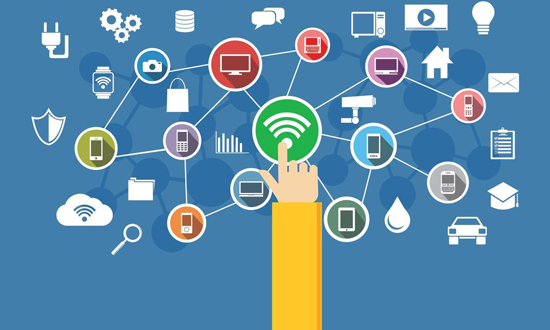
It was only a couple of years ago that we – the public – started to understand the term Internet of Things (IoT). Until then, we’d never entertained the idea that our bathroom tap might want to have a chat with the dishwasher.
Our naivety in these matters promised us many great things. It’s also promising many great dangers.
The IoT is full of inflated promises of increased efficiency, lives made easier, and people and industries made perfect. It’s reminiscent of Snowball falsely promising the others in Animal Farm that their new technology – The Windmill – would bring them a life of peace and leisure. A life in which “sordid labor” would be lifted from their backs.
The same promises were made when email and smartphones were invented. These progresses were hailed as a miraculous salve, ready to be employed by all for an easier and better life. The same is now happening with the IoT. The potential benefits grow bright, while the dangers are cast into the quiet shadows.
It’s time to draw attention to these dangers. Here are seven terrifying promises of the Internet of Things:
1. An Unbearable World of Advertisements
If you think ads being thrust upon you every time you use something digital is frustrating, you’ve seen nothing yet.
It won’t be long until your trousers are horrified by your weight gain. In turn, they’ll conspire against you. They’ll have the TV showing contextual ads about new fad diets. The touch-screen on the fridge will be selling you low-fat yogurt.
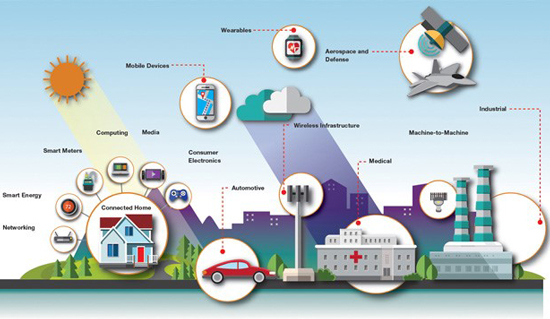
Your watch will be telling you to pay for a new fitness app. Google could even have your NEST thermostat, with its many uses, telling you the weight-loss benefits of having the heat turned up.
It used to be the case that our private dwellings were our quiet escape from the bombardments of the high street. But marketers encroached on that privacy through TV ads, cold calling, and more recently, our connected devices. With the future promising the connectedness of everything including the kitchen sink, the only means of escaping so many advertisements will be the top of a snow-covered mountain.
2. A Conspiracy of Perfection
With the IoT comes a burgeoning of “tracking devices”. Small devices that track everything from the steps you take, to a minute-by-minute analysis of your cortisol levels. By tracking certain aspects of our lives, we are told, we can “optimize” and “make better life choices”.
In other words, if we have enough data, we will know exactly what to do to become the perfect version of ourselves. If we’re overweight, unwell, tired, or stressed, the fault is ours for not paying attention to “The Data”. Society will cast asunder us fat, unhappy ones simply for choosing human error over a life dictated by algorithms and apps. The corporations will no-doubt punish us, too. More expensive health insurance because the sensors in the fridge saw how many pies we’ve eaten, is just the beginning.
This pressure for continual self-improvement and optimization drags us further from the present than current technology forces us to go. This will necessarily drive an even greater wedge between those who are connected, and those who aren’t.
3. A Waste of Money
It used to be that when we bought a washing machine, it was a rare expense. The next one would be purchased in 15 years or so. Something might go wrong in the meantime, but the guy down the road would fix it.
Today, washing machines have a much shorter lifespan. We have to be prepared to shell out for a new one around every five years (thanks to planned obsolescence). A new smartphone, smartwatch, and tablet every three or four years. A new laptop every four to five years. These lifespans are short. The only consolation is that there’s not too many things to replace.
Until the IoT, that is. Your mattress may not need replacing every couple of years, but the sensor inside of it may do. The same goes for your kitchen table, and the sofa. For cheaper connected devices like the kettle, toaster, your belt, light switches and door knobs; expect replacement of these components to become a new, regular expense.
When your house is awash with 30, 50, 100 connected devices, that’s a lot of electronic gadgetry to keep working 365 days per year. That’s a lot of replacing broken sensors. That’s a lot of money.
4. A Security Nightmare
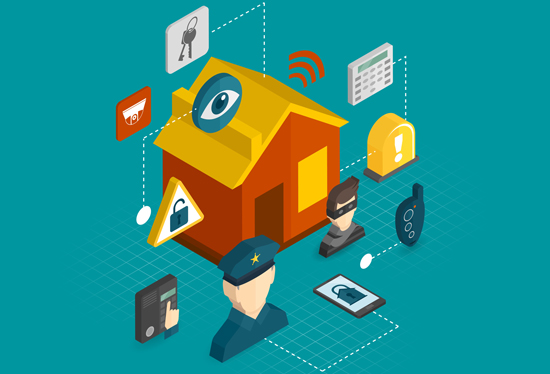
The Internet has been around for around 20 years now, and its security is far from perfect. Hacker groups still ruthlessly take advantage of these flaws, despite spending billions on tech security. The IoT, on the other hand, is primitive. And so is its security.
As the IoT explodes, it’s physically impossible for the security industry to keep up. Simply password protecting each of our devices isn’t working. People are leaving default passwords set, leaving their devices massively vulnerable to attack. But who can blame them? Who would want to manually change the password for 75 devices around home and work?
Until this boatload of vulnerable tech is somehow secured (the most common sensors- RFID- actually have no security), your smart-TVs, baby monitors and even Jeep Cherokees, remain open to attack. Don’t expect this to be a problem that’ll disappear quickly.
5. A World of No Privacy
The reason there’s such a buzz about the IoT is quite simple. Once everything we do, say, think, and eat, is tracked, the big data that’s available about each of us is immensely valuable. When companies know our lives inside and out, they can use that data to make us buy even more stuff. Once they control your data, they control you.
When that data is anonymous, it helps companies sell to broad market segments. More preferable, and more valuable, is when that data is relatable to an individual (like you). When a supermarket knows the food that you buy, they can offer you completely personalized deals. When Amazon tracks the products you look at, they can recommend other products based on your individual taste.
It’s good business, sure. But it also means that any information tracked about us, can be linked back to us. The calls you make, messages you send, food you eat, clothes you buy, photos you take. The sites you browse, time you spend sat down, number of beers you drink, steps you take, and conversations you have. This information is all open for the picking. Once your connected devices are neatly synced up, the picture of you available to corporations and governments will be more detailed than you could ever imagine. Privacy is dead.
6. Complete Digital Exhaustion
Look around. There’s little denying that we’re already over-connected. Kids around the world are suffering from it. Family time is being ruined by smartphone notifications. What more do we expect from technology? Is there any real benefit to be had from an oven that turns itself on when it knows you’re on your way home? From receiving a ping when you’re at work telling you the house is too cold? From your smartwatch telling you your plants need watering when you’re on a run?
All this is setting us up for is complete digital burn-out. The anti-tech movement of neo-luddism (a philosophy opposing many forms of modern technology) is fast expanding for a reason. People are tired of relying so much on technology. They’re craving a simpler way of life. Not the inflated promise of one, which is what we’re facing with IoT, but something actually simpler.
7. Impossible Choices
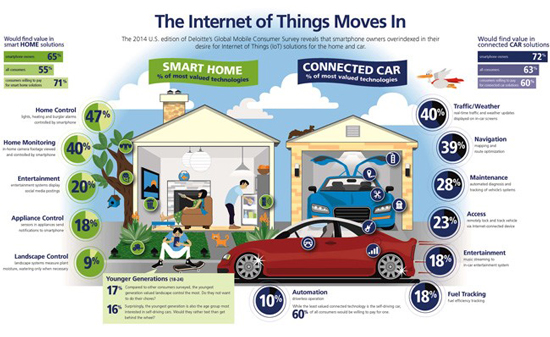
One of the most pressing technological choices we make today concerns the ecosystems we opt for. When we buy a laptop, do we choose Windows, or Apple? When we buy a smartphone, do we choose Android or iOS?
Once we’ve made a decision, it’s hard to go back. Moving all of your photos, music and videos from one ecosystem to another is a nightmare, and isn’t something you want to be repeating time and again. When it comes to the IoT, the choice is even more important. This is because the industry is new, and there are no leading ecosystems to set the “Standard” for how devices communicate. The entire industry is fragmented. Think back to when HD-DVD was battling Blue-Ray. If you placed your bets on HD-DVD, you were out of pocket a year later. We’re in the same position now with the IoT.
If your entire building is running connected devices that rely on different ecosystems, you’ve got a nightmare on your hands. You’ll either have to live with juggling a ton of devices that can’t work together, or you’ll have to replace many of them once a single ecosystem dominates.
What Should We Hope For?
The IoT will undoubtedly bring benefits. But it’ll also bring many dangers. Those who are pushing for the IoT to become huge, are those who are set to profit the most from it, and we mustn’t be blindsided by this. After all, the IoT will run on big data.
And big data means big money.
The focus of this article has largely been on the use of the IoT in the home. Seems this is the area that’s exciting so many consumers, it’s what so many people envision when they hear the term “Internet of Things”.
Yet the technology behind the IoT is doing some amazing works outside of the home as well. In the US, smart-tech is listening out for the sound of gunshots in neighborhoods. In Mumbai, sensors in the water system have helped to reduce lost water by 50%.
So we should stop getting giddy about how smart tech can connect our furniture and utensils to the Web. Instead, we should focus our efforts on how we can use this technology to make real change. On how the IoT can offer real benefits to those who need it. After all, who needs their toilet to tell them how many times they’ve been for a wee?
The Internet of Things Poses Human Health Risks: Scientists Question the Safety of Untested 5G Technology at International Conference
This is from the 2017 Expert Forum on Wireless and Health. Replicated research shows that Millimeter waves – used by the Department of Defense in crowd control weapons – interacts with human skin and eyes.
Israeli research studies presented at an international conference reveal that the same electromagnetic frequencies used for crowd control weapons form the foundation of the latest network – branded as 5G – that will tie together more than 50 billion devices as part of the Internet of Things.
Current investigations of wireless frequencies in the millimeter and submillimeter range confirm that these waves interact directly with human skin, specifically the sweat glands. Dr. Ben-Ishai of the Department of Physics, Hebrew University, Israel recently detailed how human sweat ducts act like an array of helical antennas when exposed to these wavelengths.
Scientists cautioned that before rolling out 5G technologies that use these frequencies, research on human health effects needed to be done first to ensure the public and environment are protected. “If you are one of the millions who seek faster downloads of movies, games and virtual pornography, a solution is at hand, that is, if you do not mind volunteering your living body in a giant uncontrolled experiment on the human population.
At this moment, residents of the Washington, DC region – like those of 100 Chinese cities – are about to be living within a vast experimental Millimeter wave network to which they have not consented – all courtesy of American taxpayers,” stated Dr. Devra Davis, President of the Environmental Health Trust.
Davis proposed that the Trump Administration could provide funds for research and training by implementing a 2 cents per month fee on all wireless devices, their manufacturers and network providers. “Training and research in bioelectromagnetics including the evaluation of new technologies is essential before universal deployment”, he said. “This work shows that the same parts of the human skin that allow us to sweat also respond to 5G radiation much like an antenna that can receive signals. We need the potential adverse health impacts of 5G to be seriously evaluated before we blanket our children, ourselves and the environment with this radiation.”
Potential Risks to Human Health from Future Sub-MM Communication Systems
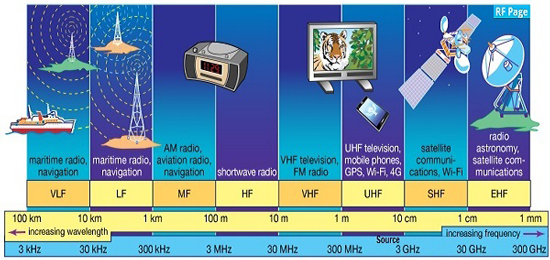
Research studies from the Dielectric Spectroscopy Laboratory of the Department of Applied Physics, Hebrew University of Jerusalem, headed by Dr. Yuri Feldman, indicate that millimeter and submillimeter waves may lead to preferential layer absorption. The number of sweat ducts within human skin varies from two million to four million.
The researchers pointed to replicated peer research of these biological effects in laboratory research conducted in other countries and considered this mechanism of action well proven.
Today’s cellular and Wi-Fi networks rely on microwaves – a type of electromagnetic radiation utilizing frequencies up to 6 gigahertz (GHz) in order to wirelessly transmit voice or data.
However, 5 G applications will require unlocking of new spectrum bands in higher frequency ranges above 6 GHz to 100 GHz and beyond, utilizing submillimeter and millimeter waves – to allow ultra-high rates of data to be transmitted in the same amount of time as compared with previous deployments of microwave radiation.
“Most people are unaware that these waves are cycling several billion times per second. 75 GHz is in fact 75,000,000,000 cycles per second,” stated Davis about these frequencies rapidly penetrating the skin.
For years, the U.S., Russian and Chinese defense agencies have been developing weapons that rely on the capability of this electromagnetic technology to induce unpleasant burning sensations on the skin as a form of crowd control.
Millimeter waves are utilized by the U.S. Army in crowd dispersal guns called Active Denial Systems.
Dr. Paul Ben-Ishai pointed to research that was commissioned by the U.S. Army to find out why people ran away when the beam touched them. “If you are unlucky enough to be standing there when it hits you, you will feel like your body is on fire.”
The U.S. Department of Defense explains how: “The sensation dissipates when the target moves out of the beam. The sensation is intense enough to cause a nearly instantaneous reflex action of the target to flee the beam.”
The conference at the Israel Institute for Advanced Studies at Hebrew University (IIAS) was organized in cooperation with the U.S. National Institute of Environmental Health Sciences (NIEHS) and the Environmental Health Trust (EHT).
Verizon announced that 5G networks will be tested in 11 U.S. cities. 5G Networks will involve the deployment of millions of antennas nationwide, thousands in each city, because millimeter waves cannot easily travel through buildings or other obstacles.
Proposed installations have lead to public outcry in residential areas where homeowners do not want antennas mounted at their yards or near schools.
Several researchers at the conference raised concerns that current regulations are not adequate to protect public health.
“There is an urgent need to evaluate 5G health effects now before millions are exposed. We need to know if 5G increases the risk of skin diseases such as melanoma or other skin cancers,” stated Ron Melnick, the National Institutes of Health scientist, now retired, who led the design of the National Toxicology Program study on cell phone radiofrequency radiation.
Dariusz Leszczynski, PhD, Chief Editor of Radiation and Health, stated that the international organization – called ICNIRP – developing recommendations for public exposure limits of these higher frequencies was planning to classify all the skin in the human body as belonging to the limbs rather than to the head or torso.
Leszczynski cautioned that: “If you classify skin as limbs – no matter where the skin is – you are permitted to expose it more than otherwise.”
“The use of sub-terahertz (millimeter wave) communications technology (cell phones, Wi-Fi, network transmission antennas) could cause humans to feel physical pain via nociceptors” stated Dr. Yael Stein, MD, who wrote a letter to the Federal Communications Commission about 5G Spectrum Frontiers.
Medical experts worldwide are calling for action. Dr. Cindy Russell detailed the state of science in a recent Santa Clara Medical Association article and concluded: “Do not proceed to roll out 5G technologies pending pre-market studies on health effects.
Re-evaluate safety standards based on long term as well as short term studies on biological effects”.
yogaesoteric
October 26, 2017
